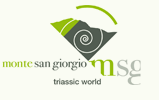Saltrio (I)
Saltrio is a small town, having an area of 347.03 the altitude ranging from 460 m / asl to 1015 m / asl of Monte Pravello; the territory is for the 30% flat, 20% of moderate slope, for the rest decidedly mountainous. Saltrio borders to the north by the Municipality of Besano, to the east by Switzerland, to the south by the Municipality of Clivio, and to the west by the Municipality of Viggiù.
The old town, which is divided into two main groups, spreads around the average altitude of 525 meters above sea level. The subsoil on the mountainous part is rocky. There were many quarries, now exhausted, that extracted precious stone cuts, the Stone of Saltrio, mostly used in Varese and in the area of Milan - apparently since the Roman era - for the building, there is still an active quarry where the rock is crushed to make rubble.
The rest of the soil is alluvial: the land is rich in boulders of the type that they call "Terra forte" (Strong soil) and therefore suitable for construction except in limited areas very steep and therefore subject to landslides that are situated on the banks of small streams. The most important ones are: Rio Valmegia, Rio Lavazée and Rio Ripiantino.
According to the authors of Toponymy the name Saltrio derives from the Latin word "Saltus" with the meaning of “forest” and therefore “the town among the woods”.
There is a lack of historical information of any significance about Saltrio even though the area is full of antique settlements as evidenced by the many Roman findings in Stabio, Ligornetto, Clivio, Viggiù, Arcisate (many tombstones, coins, etc..,). In particularly Saltrio must have had some importance for its stone quarries, because the stone of Saltrio was already used in the making of the Roman walls of Milan (dated to around 32-27 B.C.).
It is a nice looking ash gray limestone, compact grain. Its use has lasted throughout the Middle Ages, even in distant places, such as in the Cloister of Piona (Lake Como), the Certosa di Pavia - where the dominant stone is, however, that of Angera - in the Cathedral of Lugano, up to some modern uses in the cemetery of Staglieno in Genoa and the Monumental Cemetery in Milan.
In the Middle Ages the country gravitated on the rich plain of Mendrisio, where it slowly took importance as what will be the "Road of Europe" connecting Milan with Chiasso, Lugano, Gotthard, Luzern, Basel, Zurich and the Rhineland.
This is the path that the Swiss mercenary armies at the service of the Italian masters followed in the fifteenth and sixteenth centuries, the same armies that taking advantage of their superiority captured on several occasions the lands of the actual Canton of Ticino, subjecting them to the first Cantons and then gradually to the Cantons on the other side of the Alps.
Today’s border between the two countries was that defined in 1526 when also the Parish of Balerna was given to the Swiss while Saltrio and Clivio remained with the Duchy of Milan and later on to Italy.
This was the land of stonecutters and sculptors whose growth was certainly favoured by the rich presence of freestone (the Quarries of Arzo and Viggiù, then that of Saltrio) but also by the cultural atmosphere from which drew source, if not the primitives "maestri comacini”, uninterrupted legions of artists from the" maestri campionesi" onwards went all over Italy and many foreign countries (Spain, Germany, Czechoslovakia, Poland, Russia, Costantinopoli, etc.)
A countless diaspora leaving from the territory of the lakes of Lombardy and that is honoured by the following famous names: Adam d'Arogno, Borromini from Bissone, Fontana from Melide, Maderno from Capolago, Longhena from Maroggia perhaps also Benedetto Antelami of Vall'Intelvi and, in our more restricted area, Martino Longhi the Elder and his roman descendants from Viggiù to the modern Vela from Ligornetto, Enrico Butti from Viggiù and Pompeo Marchesi precisely from Saltrio.




